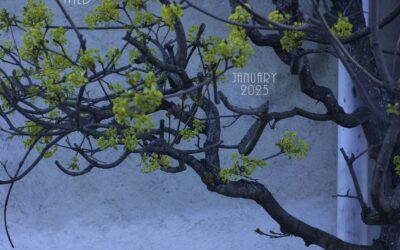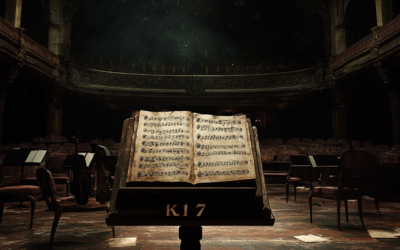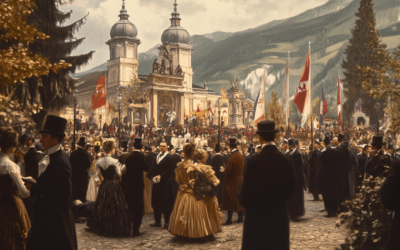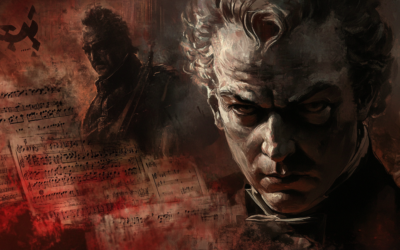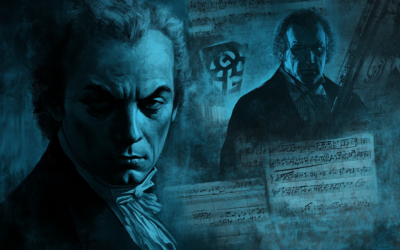Dissecting the Flaws in the Portrait and the Music That Wasn't
The Curious Case of Mozart's Phantom Sonata
In a striking case of artistic misattribution, the Musikwissenschaft has rediscovered Mozart through a portrait, attributing a dubious composition to him based solely on a score’s presence. One has to wonder: is this music really Mozart’s, or just a figment of our collective imagination?
Mozart: The Fall of the Gods
This book offers a fresh and critical look at the life of Wolfgang Amadeus Mozart, challenging the myths that have surrounded him for centuries. We strip away the romanticised image of the “natural genius” and delve into the contradictions within Mozart’s extensive biographies. Backed by nearly 2,000 meticulously sourced citations, this work invites readers to explore a deeper, more complex understanding of Mozart. Perfect for those who wish to question the traditional narrative, this biography is a must-read for serious music lovers and historians.
"In the curious case of Mozart's phantom sonata, standing next to a score doesn’t make you a composer—though it does make for a rather amusing tale!."
Mozart: The Fall of the Gods
In a rather amusing twist, the Musikwissenschaft has unearthed a portrait of the young Mozart from his first trip to Italy, only to attribute a composition to him based on nothing more than the appearance of a score in the painting. As if by mere proximity, the child at the harpsichord was anointed a composer! It begs the question: does standing next to a painting of a lion make one a wildlife expert?
The artist behind this questionable portrayal remains shrouded in mystery. Initially thought to be Saverio Dalla Rosa, some now suspect Giambettino Cignaroli may have been at the easel, perhaps in a fit of familial collaboration. Leopold Mozart’s letters provide tantalising yet scant details, revealing that the portrait was executed in just two sittings. One can’t help but wonder if it was more of a rush job than a masterpiece. Leopold mentions the commission but neglects to comment on the music—surely an oversight for such a “historic” moment.
Constanze Mozart, in a later letter, claims knowledge of two portraits of her husband but dances around the specifics like a skilled diplomat. When the painting reappeared in 1856, it was as if a ghost had emerged from the shadows, yet doubts about its connection to Mozart linger like an unwelcome dinner guest.
Perhaps the most outrageous aspect of this story is the complete absence of the original manuscript, signature, date, and any watermarks. It’s almost as if the piece of music existed solely as a clever ruse! The score displayed on the harpsichord doesn’t fit into any known repertoire of Mozart’s; rather, it seems to be an elaborate game of “Who’s That Composer?” with Mozart holding a losing hand.
The notion that this portrait serves as a “souvenir” is equally entertaining. In the 18th century, it was all the rage to immortalise oneself alongside notable props—like an instrument that screams, “Look at me, I’m a musician!” It seems likely that the choice of a score was more about enhancing the subject’s artistic pedigree than about accurately representing his works. Perhaps a piece by Baldassare Galuppi was standing in for Mozart, reminding us that context is everything—unless, of course, you’re trying to score a few points in the grand game of music history.
In summary, the absence of the original manuscript, signature, date, and watermarks raises serious questions about the authenticity of the music attributed to Mozart in this whimsical portrait. The conflation of a young genius’s image with an unverified composition serves as a stark reminder that, sometimes, our romantic notions of history can lead us down a rabbit hole of misattribution. If only it were as simple as being in the right place at the right time!
You May Also Like
Constanze Mozart’s Enduring Love
Although some have doubted her devotion, Constanze’s own words and actions illustrate a widow deeply committed to preserving Mozart’s legacy. Diaries, personal correspondence, and eyewitness testimony all challenge the notion that she neglected his memory—while the circumstances around his burial grow ever more perplexing.
A Revealing New Interview on His Thematic Catalogue
We’re excited to present a brand-new interview that challenges many of the long-held assumptions about Mozart’s Thematic Catalogue (1784–1791). Conducted by Swedish journalist Henry Grynnsten, this conversation delves into groundbreaking forensic techniques—like advanced ink analysis and digital image processing—that may change the way we view Mozart’s late works.
The Rattling Symphony: A Critical Take on K. 17
Often attributed to Mozart, the K. 17 symphony is anything but refined. Lacking orchestration and filled with gaps, it raises more questions than answers about its true authorship.
The Hidden Origins of the Salzburg Festival: A Nationalist Dream
The Salzburg Festival, far from being a mere celebration of Mozart’s genius, was born out of nationalist ambitions during a turbulent period in Austro-German history. Conceived by figures like Max Reinhardt, Heinrich Damisch, and Friedrich Gehmacher, the festival was deeply rooted in ultranationalistic ideals, transforming Mozart’s legacy into a tool for cultural dominance. The truth behind its founding has long been obscured, but the primary sources tell a different, darker story.
Mozart, Wagner, and the Nazi Myth
The Führer’s admiration for Wagner’s racially charged ideology not only influenced the policies of the Nazi regime but also reshaped the legacy of Mozart. Under National Socialism, Mozart was not celebrated as a universal genius but as a symbol of German purity and superiority. His music, stripped of its international influence, was rebranded as an expression of Aryan identity, intended to unify and inspire the German people.
Mozart, the Anschluss, and Nazi Propaganda
Following the 1938 Anschluss, the Nazi regime rebranded Mozart as the quintessential German composer, using his image to promote unity between Austria and Germany. The Salzburg Festival became a platform for Nazi propaganda, distorting Mozart’s legacy to fit their nationalistic and racial agenda.



